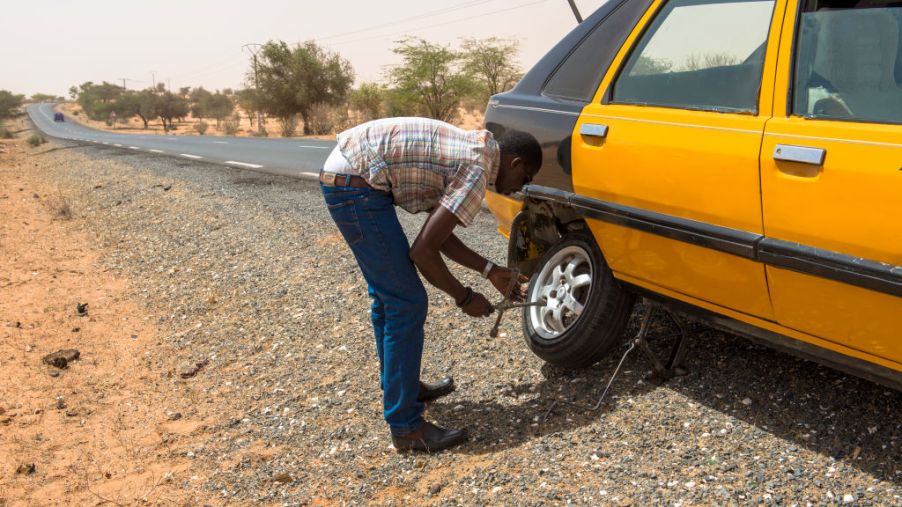
The 7 Best Ways to Avoid a Flat Tire
Inevitably the tires on our vehicles are going to go flat. While it seems to happen at the worst times, there really isn’t a good time to have a flat tire. It can even cause you to lose control of your vehicle leading to damage and even possible injury.
Fortunately, there are ways to reduce the frequency of these incidents. The following seven tips can help you prevent flat tires and get you ready in case you do end up with a flat.
The basics
First, make sure you’re doing all the elementary, common sense things you should be doing for your vehicle’s tires. Ensure your tires are properly inflated at all times by checking the pressure with a tire gauge. Under-inflated tires are a common cause of blowouts.
Keep an eye on your tires’ tread and make sure everything is wearing down evenly. Abrupt starts and stops can cause the rubber to break down and wear down the tread. Get your tires rotated every 5,000 to 10,000 miles or every six months.
Make sure you have what you need for dealing with a flat stored in your car. Many keep cans of compressed air with them. You can also store tire pumps, car jacks, lug wrenches, and any other tools you might need to remove the hubcaps. If you’ve never used the tools before, it’s better to learn when you’re not stranded on the roadside with a flat tire.
Avoid obvious hazards
If at all possible, avoid construction zones as debris like metal shards, nails, glass, and rocks can puncture your tires. If you can, avoid roads that aren’t well-kept. According to the Insurance Information Institute, potholes and poor road conditions not only cause flats, but can also do major damage to your wheels, rotors, and other parts of your vehicle.
The spare tire
First, you’ll want to make sure your car has a spare tire because not all manufacturers include them. Make sure you know where the spare tire is and check it from time to time to make sure it’s in good condition. If you think your spare tire needs replacing, do so as soon as possible. Check the sidewalls for small cracks that may indicate dry rot.
Should you have a flat tire and end up using your spare, don’t drive on it for long distances. Keep in mind, spare tires are only meant to get you to the nearest service station. Don’t exceed the maximum safe speed of 50 mph for spare tires.
Avoid overloading
Pay attention to the maximum weight that your vehicle can hold. According to Popular Mechanics, exceeding that weight and overloading your vehicle can ruin your tires.
If you do have to haul something heavy, it’s a good practice to boost your tire pressure to help your vehicle manage the weight. However, you’ll want to check your tires too to make sure you don’t inflate them past the maximum pressure limits.
Tire recalls
Like many other things in our lives, sometimes tires are recalled and it’s a good idea to be aware of these. There’s a great tool provided by the NHTSA that lets you check for recalls for your tires by brand and model. To make it even easier, you can register and request to receive emails about recalls involved your vehicles.
Buy quality tires
When it’s time to get new tires, look for tires that are thick and puncture-resistant. Pay attention to the tread of the tires you’re considering. Also, look for tires that have solid wear warranties.
Check your brakes
One thing many people don’t consider when trying to maintain their tires is their brakes. Brakes that aren’t adjusted properly or worn not only warp the rotors and create uneven wear on the wheels but can also damage the tires as well. Maintaining your brakes will help protect your tires and keep you safe too.


